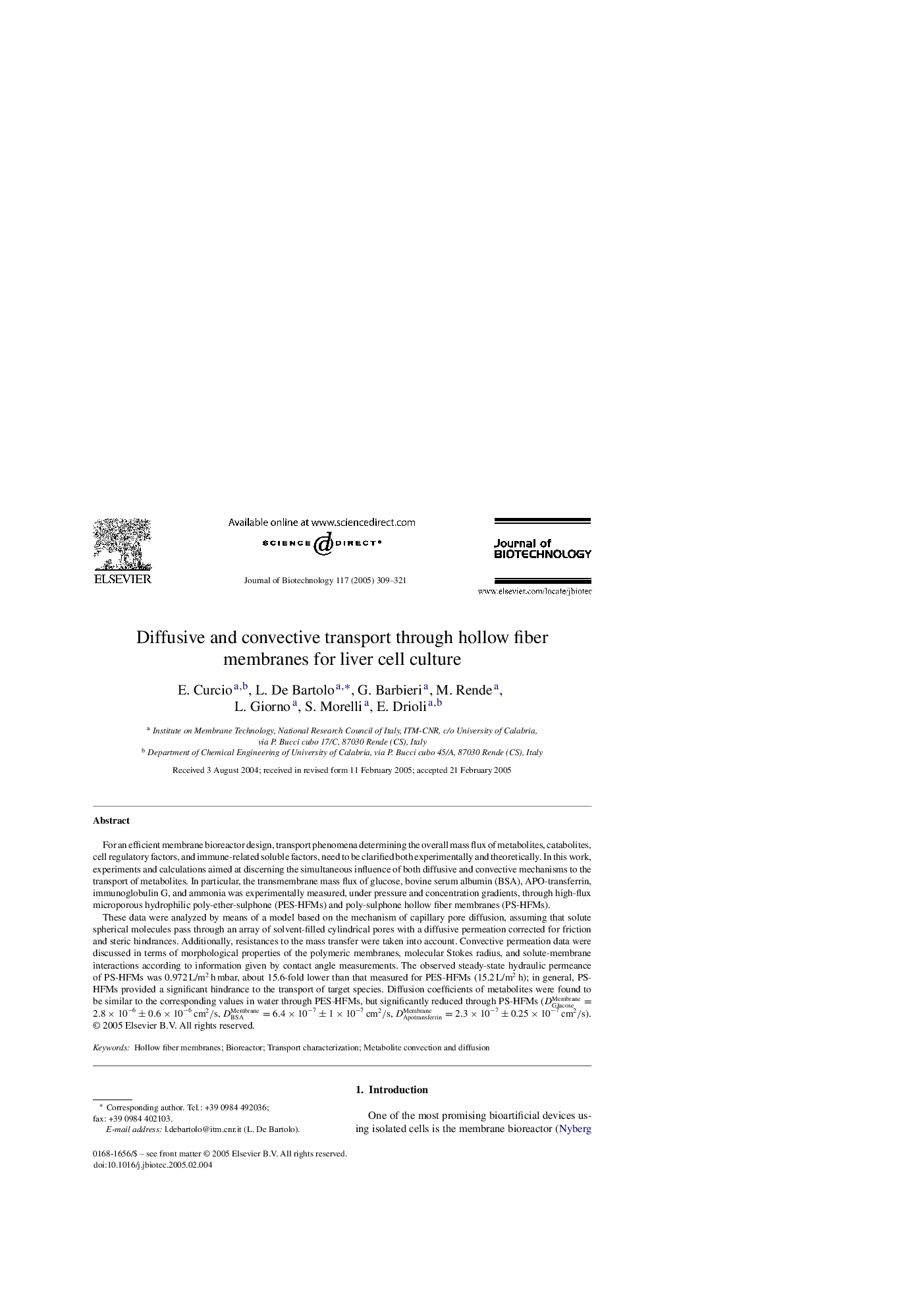| Article ID | Journal | Published Year | Pages | File Type |
|---|---|---|---|---|
| 9604389 | Journal of Biotechnology | 2005 | 13 Pages |
Abstract
These data were analyzed by means of a model based on the mechanism of capillary pore diffusion, assuming that solute spherical molecules pass through an array of solvent-filled cylindrical pores with a diffusive permeation corrected for friction and steric hindrances. Additionally, resistances to the mass transfer were taken into account. Convective permeation data were discussed in terms of morphological properties of the polymeric membranes, molecular Stokes radius, and solute-membrane interactions according to information given by contact angle measurements. The observed steady-state hydraulic permeance of PS-HFMs was 0.972 L/m2 h mbar, about 15.6-fold lower than that measured for PES-HFMs (15.2 L/m2 h); in general, PS-HFMs provided a significant hindrance to the transport of target species. Diffusion coefficients of metabolites were found to be similar to the corresponding values in water through PES-HFMs, but significantly reduced through PS-HFMs (DGlucoseMembrane=2.8Ã10â6±0.6Ã10â6cm2/s, DBSAMembrane=6.4Ã10â7±1Ã10â7cm2/s, DApotransferrinMembrane=2.3Ã10â7±0.25Ã10â7cm2/s).
Related Topics
Physical Sciences and Engineering
Chemical Engineering
Bioengineering
Authors
E. Curcio, L. De Bartolo, G. Barbieri, M. Rende, L. Giorno, S. Morelli, E. Drioli,
